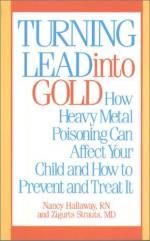|
This section contains 1,701 words (approx. 6 pages at 300 words per page) |

|
Heavy metals is a common toxicological term covering a number of metallic substances that acutely damage human beings and ecosystems, and whose atomic weights fall between and 64 and 201. Those responsible for the most injuries and deaths are lead, mercury, and cadmium. Others with toxic properties—for example zinc, beryllium, chromium, aluminum, bismuth, manganese, and copper—are frequently listed as heavy, but because their atomic weights fall below 64 are not chemically regarded as such. A term better-suited to all these substances might simply be toxic.
Another toxic material, arsenic, is often included among the heavy metals but chemists see arsenic as a semimetal because its chemical and physical properties are only partially metallic. Thus they advocate a separate classification for this substance that since the 1980s has been poisoning well water and damaging the health of hundreds of thousands of villagers in Bangladesh and West Bengal, India...
|
This section contains 1,701 words (approx. 6 pages at 300 words per page) |

|


